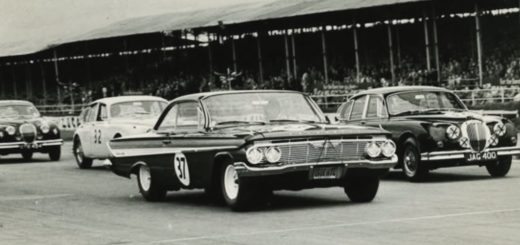The Chevy Traverse received a Marginal overall rating in the Insurance Institute for High Safety’s (IIHS) updated moderate overlap front test.
For those readers who may be unaware, the IIHS is an independent, scientific and educational 501(c)(3) organization with a mission to reduce deaths, injuries, and property damage from motor vehicle crashes. The IIHS’ recently updated moderate overlap front test now incorporates a rear passenger dummy positioned behind the driver, in addition to a driver dummy. The rear-seated Hybrid III dummy represents a small woman or 12-year-old child with regard to stature.
Rear passenger protection is considered the main differentiator in the updated IIHS test. In order to earn a good rating, measurements must indicate that the second-row dummy did not exceed limits indicating an excessive risk of injury to the head, neck, chest, abdomen, or thigh. The dummy’s head must not hit the vehicle interior or come too close to the seat back, and the dummy’s body must not slide under the lap belt (also known as “submarining”), which can result in abdominal injuries. The possibility of chest injuries is measured via a pressure sensor on the shoulder belt.
The IIHS recently examined 13 midsize crossovers in its updated moderate overlap front crash test, including the Chevy Traverse. The Traverse was one of three crossovers to receive an overall rating of Marginal, the other two being the Toyota Highlander and Volkswagen Atlas, while four crossovers (Ford Explorer, Ford Mustang Mach-E, Subaru Ascent, Tesla Model Y) received a Good overall rating. Six crossovers received a Poor overall rating, including the Honda Pilot, Hyundai Palisade, Jeep Grand Cherokee, Jeep Wrangler 4-door, Mazda CX-9, and Nissan Murano.
The Chevy Traverse was notable for a more significant risk of head or neck injuries, while seat belt tension was also high, increasing the risk of chest injuries. Additionally, the driver dummy’s head collided with the steering wheel through the airbag.
“Zeroing in on weaknesses in rear seat safety is an opportunity to make big gains in a short time, since solutions that are already proven to work in the front can successfully be adapted for the rear,” said IIHS Senior Research Engineer Marcy Edwards. “The four good ratings in this round of testing show that some automakers are already doing it.”
Subscribe to GM Authority for more Chevy Traverse news, Chevy news, GM safety news, and around-the-clock GM news coverage.

















Comments